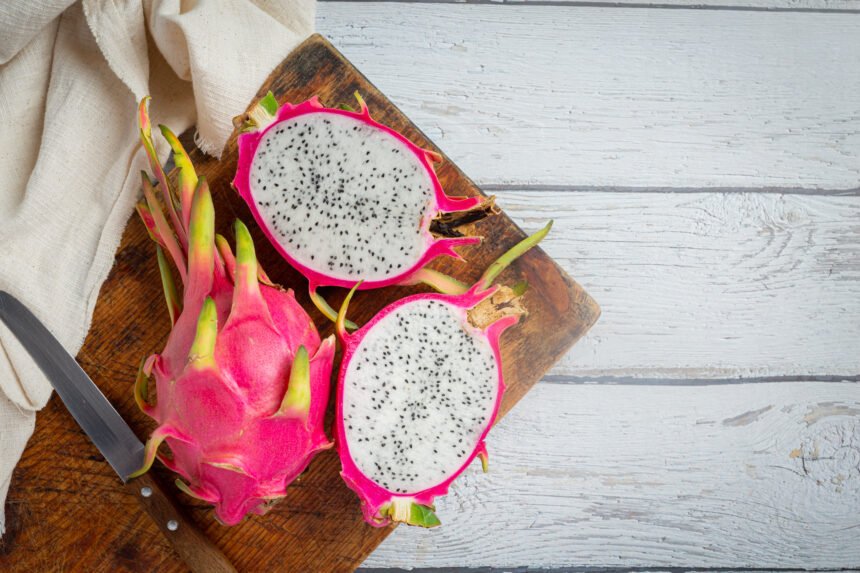Dragon Fruit is Nutritious Value
Approximately 227 grams, or one cup, of dragon fruit contains:
Contents
Dragon Fruit is Nutritious ValueDragon Fruit has Health BenefitsIncreases ImmunityFacilitates DigestionPromotes Heart HealthControls Blood SugarEnhances the Health of the SkinEnhances Muscle and Bone StrengthEncourages HydrationDifferent Types of Dragon FruitHow to Consume Dragon FruitPrecautionsConcluding remarks
- Approximately 136 calories
- 29g of carbohydrates
- 7g of fiber
- 3g of protein
- 9% of the daily value (DV) of vitamin C
- Iron: 8% DV
- 18% DV for magnesium
- 3% DV for calcium
Additionally, it is abundant in phenolic compounds, flavonoids, and betalains, which are antioxidants that shield the body from oxidative stress.
Dragon Fruit has Health Benefits
Increases Immunity
- Antioxidants and vitamin C boost immunity and combat infections.
Facilitates Digestion
- A high fiber content enhances gut health and encourages regular bowel motions.
Promotes Heart Health
- Omega-3 and omega-6 fatty acids, which are abundant in seeds, reduce cholesterol and enhance cardiovascular health.
Controls Blood Sugar
- When consumed in moderation, it may help balance blood sugar levels, which is advantageous for diabetics.
Enhances the Health of the Skin
- Vitamin C and antioxidants support radiant skin and lessen the appearance of aging.
Enhances Muscle and Bone Strength
- includes calcium and magnesium, which are necessary for strong bones and healthy muscles.
Encourages Hydration
- Dragon fruit is high water content aids in maintaining bodily hydration, particularly in hotter regions.
Different Types of Dragon Fruit
Various types of dragon fruit are distinguished by the color of their flesh:
- Hylocereus undatus, or white-fleshed, has pink skin and black seeds with white pulp.
- Hylocereus costaricensis, or red-fleshed, has pink skin, crimson pulp, and a highly pleasant taste.
- Yellow dragon fruit (Hylocereus megalanthus): smaller but sweeter, with yellow peel and white pulp.
How to Consume Dragon Fruit
- Cut in half, then use a spoon to remove the flesh.
- To add crunch and color to fruit salads, add cubes.
- Add to mocktails, juices, or smoothies.
- Add slices of dragon fruit to porridge, chia pudding, or yogurt.
- Use as a natural garnish for cocktails and pastries.
- For a cool summer treat, make dragon fruit popsicles or sorbet.
Precautions
- Because of the high fiber content, eating too much can cause mild gastrointestinal discomfort.
- Rarely, allergic reactions can happen to some persons.
- For optimal flavor, use ripe dragon fruit (the skin should be brilliant, not mushy or soft).
Concluding remarks
Beyond its aesthetic appeal, dragon fruit is a nutritional powerhouse that enhances digestion, strengthens immunity, and promotes general health. It is essential to a well-balanced diet because of its distinctive appearance, revitalizing taste, and abundant nutritional profile.


